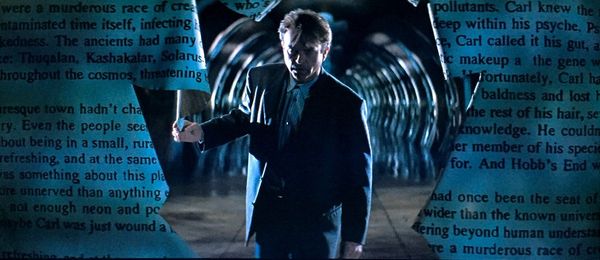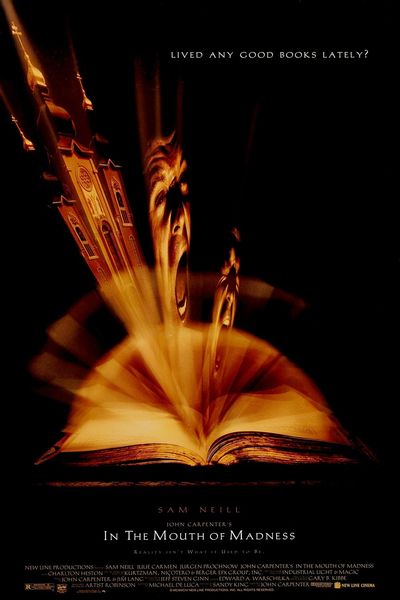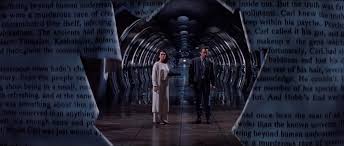In the Mouth of Madness (1994)

“In the Mouth of Madness” (1994): A Chilling Exploration of Reality and Madness Directed by John Carpenter
Released in 1994, “In the Mouth of Madness” is a psychological horror film directed by the master of horror, John Carpenter. Known for his influential works like “Halloween” and “The Thing,” Carpenter brings his signature blend of tension, paranoia, and supernatural elements to this thought-provoking narrative. With a stellar performance from Sam Neill and a compelling storyline that blurs the line between fiction and reality, “In the Mouth of Madness” has garnered a cult following and remains a notable entry in the horror genre.
The film follows the story of John Trent (Sam Neill), an insurance investigator tasked with locating the missing author Sutter Cane (Jürgen Prochnow), whose horror novels have incited violent behavior among his readers. Cane’s latest work, set to be released shortly, has become an obsession for fans, and Trent is drawn into a web of madness as he delves deeper into Cane’s world. His investigation leads him to the fictional town of Hobb’s End, where he encounters disturbing occurrences and unsettling characters, ultimately questioning his own sanity as he grapples with the influence of Cane’s writing.

John Carpenter’s direction is marked by a meticulous attention to atmosphere and psychological tension. The film’s cinematography, crafted by Gary B. Kibbe, employs a mix of dark, eerie visuals and surreal imagery, effectively capturing the descent into madness. Carpenter’s use of practical effects and haunting sound design enhances the film’s unsettling tone, immersing viewers in a world where reality and fiction converge. The pacing is deliberate, allowing the tension to build gradually, drawing audiences into the psychological horror that unfolds.

“In the Mouth of Madness” is primarily classified as a psychological horror film, but it also incorporates elements of mystery and satire. The narrative raises profound questions about the nature of reality, perception, and the power of storytelling. As Trent navigates the horrors of Hobb’s End, the film explores the idea that fiction can have a tangible impact on reality, challenging the boundaries between the two. This thematic depth adds layers to the film, making it not only a horror experience but also a commentary on the influence of literature and the fragility of the human mind.

Sam Neill delivers a powerful performance as John Trent, effectively portraying the character’s growing paranoia and confusion. His descent into madness is both compelling and relatable, as he grapples with the nightmarish scenarios presented to him. The supporting cast, including Jürgen Prochnow as Sutter Cane and Julie Carmen as Linda Styles, adds complexity to the narrative, embodying characters that blur the line between reality and fiction.

Upon its release, “In the Mouth of Madness” received mixed reviews from critics, with some praising its originality and thematic depth, while others found its plot convoluted. However, over time, the film has gained recognition as a cult classic, celebrated for its unique approach to horror and its commentary on the impact of fiction. It is often regarded as a fitting tribute to the works of H.P. Lovecraft and the psychological horror genre.
In conclusion, “In the Mouth of Madness” is a chilling exploration of reality and the human psyche that showcases John Carpenter’s directorial prowess and Sam Neill’s exceptional talent. With its engaging narrative, unsettling atmosphere, and profound themes, the film offers a compelling experience for fans of psychological horror. As it delves into the complexities of madness and the power of storytelling, “In the Mouth of Madness” stands as a significant work in Carpenter’s filmography, inviting viewers to reflect on the thin line between reality and fiction in a world fraught with fear and uncertainty.











